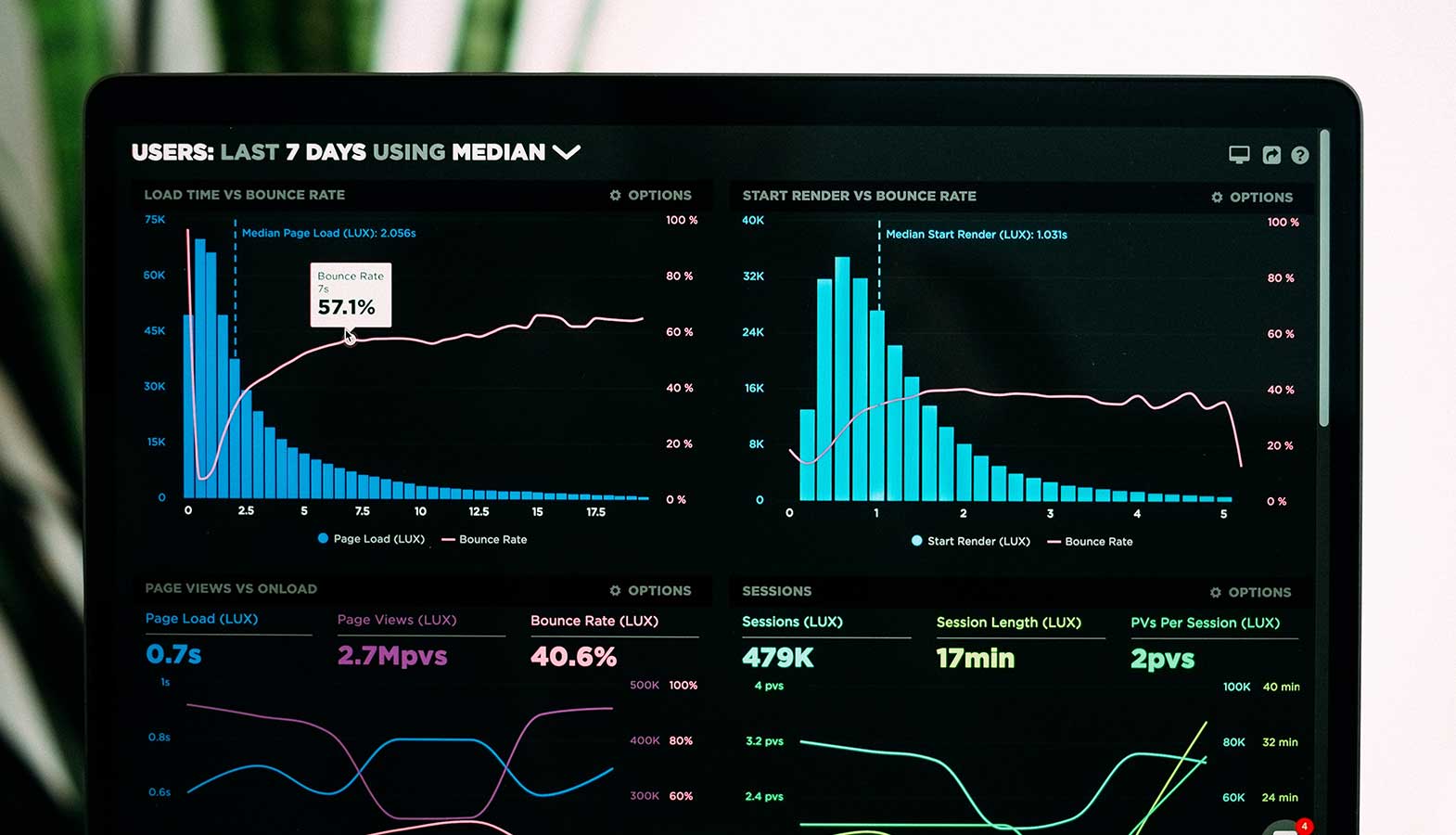Understand the Difference Between HTTP/2 and HTTP/1.1 Protocol Before You Upgrade
Do you struggle to keep people on your website? With Google’s focus on user experience now driving search results, performance, speed and all-around good UX mean more than ever. One simple trick website owners can implement with a single request to their web host is to use the HTTP/2 protocol instead of HTTP/1.1. This simple change can help make your website faster and more secure.
While you may need to do more to increase and retain traffic, switching to the HTTP/2 protocol can make an instant impact and is quick, easy and cost-free.
What Is HTTP/2?
The HTTP/2 protocol is the latest version of HTTP (hypertext transfer protocol), and it’s a way to transfer data between a website and a web browser, such as Google Chrome. The first version of HTTP uses plain text to communicate the data.
Many websites have since started using HTTPS, which uses a security key to transfer data. That way, users can visit websites that use HTTPS without compromising their security.
However, there are many advantages to using HTTP/2 over HTTP/1.1. Like HTTPS, HTTP/2 offers more security and protection than its predecessor HTTP/1.1. As many technological advancements make their way to the internet, HTTP needs to keep up. HTTP/2 is the first significant change to that protocol since its creation. The change has been due for a while, and it provides many extra features and advantages for business owners and web developers.
Using a Single Connection
One of the primary advantages of using the HTTP/2 protocol is that you only need one server connection to load a website. With the HTTP/1.1 protocol, you may need multiple requests or connections to load a site, which can slow the site down.
When you use HTTP/2 with a single TCP connection or server push for the entire website session it reduces the need for the round trip that the data has to take to set up multiple TCP connections. Reducing those trips speeds up the connection, page load times and makes it more efficient to use.
Reduce Security Concerns
Except for HTTPS connections, HTTP/1.1 has some security issues because it passes information between the web browser and server in plain text. Whether you use WordPress or another platform, by switching to the HTTP/2 protocol, you instantly resolve these security concerns for your website.
While your HTTP protocol upgrade won’t eliminate security concerns entirely, it’s a great place to start. You can combine HTTP/2 with other data communication functions to help keep internet usage and network resources secure.
Less Network Latency
Network latency occurs when a network experiences a delay in communicating data over HTTP. Some delays can occur, but having high latency can be a problem when it comes to keeping visitors on your website as it directly impacts page load times.
HTTP/2 can help reduce this latency so that you and your visitors don’t experience load time issues. Delays between the client and server impact the user experience by leading to increased bounce rates, and also open the door for security issues and malfunctions.
While you may have to deal with some latency, the less delay, the better. Switching to HTTP/2 can be an easy way to reduce network latency on your website.
Lighter Network Footprint
A network footprint is the amount of space that you need for a piece of software or hardware. You can use it to refer to how much physical space your computer needs as well as the server space your website needs.
One of the benefits of the HTTP/2 protocol over HTTP/1.1 is that you can use a smaller network footprint. Because of the increased efficiency and the single TCP connection, you don’t need as much space.
Lower Bandwidth Requirements
Every website needs some amount of bandwidth to load each web page. If you find your website requires a lot of bandwidth to run, you should consider using the newer HTTP protocol as well.
HTTP/2 doesn’t require as much bandwidth as the original HTTP/1.1 protocol to run the same website. HTTP/2 allows the server to run more efficiently which makes your website run faster and more smoothly by using less bandwidth.
A website utilizing the HTTP/2 protocol also uses less server memory and is more compact than a site using the HTTP older version, making your site easier to use and maintain as well.
More Efficient Data Processing
Another perk associated with HTTP/2 is that data processing can be more efficient than with HTTP/1.1. The client and server can transfer data more smoothly, and data parsing is easier with HTTP/2.
Data processing efficiency is crucial for operating anything on the world wide web, especially for your business. If you can improve your website’s data processing efficiency it will lead to better performance and user experience. These factors contribute to improving your search engine rankings which lead to more web traffic and customers.
Access to Header Compression
Header compression can help speed up data transfers when loading and using a website. It can also help with bandwidth utilization, so you can make sure you don’t use more bandwidth than necessary.
You can enjoy both of these technological advancements when using HTTP/2. Header compression reduces the size of files on your website, which can reduce the amount of time it takes for those files to load.
Then, you and your visitors can view your website more easily. And if you struggle with a high bounce rate, speeding up file load times can be a great way to reduce that.
Capable of Multiplexing
When you switch your website over to HTTP/2, it can take advantage of multiplexing. Multiplexing allows your website to make a large number of requests over a single TCP connection at the same time. Your site can then receive any number of requests in any order over one connection.
Having everything load at once can make your connection faster, so the site doesn’t need to send multiple requests wait as long for the request and response process from the server. With HTTP/1.1, your site would need to request CSS from the server and wait to receive it. Then, after the CSS is loaded the site could request JavaScript and continue with the page load.
After that, it would still need to wait on the request and response process for each individual image. However, HTTP/2 reduces that process by combing the number of requests instead of waiting for individual processes between the client and server to finish, limiting the load on the server and increasing page load speed.
Can Handle TLS
TLS is a new version of the popular secure sockets layer (SSL) certificate. Both certificates can secure your website no matter the protocol you use.
While HTTP/1.1 can handle TLS, the HTTP/2 protocol allows servers to support TLS more efficiently. A TLS connection creates a unique security code each time you or someone else visits your website. That will help keep your website more secure and protect you from hackers and malicious bots.
Flow Control
Implementing HTTP/2 allows the client and server to combine the request and response work into a single stream. This connection can also work with multiple streams and because of that, HTTP/2 uses flow control to keep the streams from interfering with each other.
An HTTP/2 connection can support flow control at the stream level and for the overall connection. That way, your website can handle requests and responses more easily than with a server push with HTTP/1.1.
Flow control helps the requests between modern browsers and the server move smoothly back and forth to improve website performance and page load speed.
Prioritization
If your website has a lot of resources, you will benefit from switching to HTTP/2 because of its ability to prioritize resources. Your website can load the most important elements first and then focus on the less important pieces of a web page.
Using prioritization saves bandwidth and increases the overall page speed, which directly improves the visitor’s user experience.
Speed Up Your Site
One of the most noticeable benefits of HTTP/2 compared to HTTP/1.1 is a significant increase in site speed. A slow website directly impacts user experience and bounce rate, which sends signals to Google that determine search engine rankings as well.
A fast and engaging website is good for users and your business. While you can optimize your website code and work to reduce the number of images within your user interface to help speed up your site, switching to HTTP/2 is a quick and simple way to optimize your website without making any time-consuming changes or compromising on the front-end design.
HTTP/2 can resolve speed issues that stem from the HTTP/1.1 protocol, boosting your site performance instantly allowing you to keep people on your website and make them want to explore more.
Better SEO
Search engine optimization (SEO) is essential to growing your online presence and earning more web traffic. However, having good content isn’t always enough to rank highly in search results.
While SEO changes regularly, having a faster, more efficient website helps your search engine rankings. User experience is a huge part of your SEO, and so you can use the benefits of HTTP/2 to help your SEO overall. Remember, there is no magic bullet when it comes to SEO. Improving your rankings requires small adjustments and optimizations that all work together to move the needle.
Google also prioritizes websites using HTTP/2 over those using HTTP/1.1. Even if you don’t have the best content or most optimized website overall, using the new version of HTTP will contribute to your SERP rankings.

How to Switch to HTTP/2
After understanding some of the benefits of the HTTP/2 protocol over the old HTTP/1.1 protocol, the next thing you’ll want to know is how to switch from HTTP/1 to HTTP/2. That way, you can take advantage of the benefits of the new protocol and improve your website overnight.
While you don’t have to switch to HTTP/2, it can be a wise move that requires little effort on your part. Even if you don’t need any of its benefits, using the latest technological advancements can help keep your site up to date, safe and secure.
Here’s how you can make the switch to HTTP/2.
Get a TLS Certificate
If you haven’t already, you should get a TLS or SSL certificate for your website or make sure your existing certificate is valid before switching to HTTP/2.
Fortunately, HTTP/2 is backwards compatible, so you don’t need to worry about checking compatibility with the certificate.
Using a security certificate will not only make the transition to HTTP/2 simpler, but it can also help improve your SEO overall. You may notice a minor improvement in your organic search traffic after the switch.
Update Your Site
Another step you should take when switching to HTTP/2 is to make sure your site is up to date. Update your website or CMS software as well as any plugins or themes you use.
Updating your site helps to resolve security vulnerabilities, and it can help reduce any compatibility issues.
If you don’t know how to update your site or if you have any available updates, you can hire a web developer and they can help you make sure everything is in good shape.
Create a Backup
Before you update your website it is best practice to create a backup in case anything goes wrong. That way, you can easily restore the site and begin troubleshooting any issues that arise.
If you are using WordPress to manage your website you can use a backup plugin to make a copy of your entire site, or if you use a managed WordPress host like Kinsta you can simply click on the Backup button to create a fresh copy of the site.
While you may not have issues switching to HTTP/2, having a recent backup can help you get your site back up and running if something does go wrong during the transition.
Verify and Test HTTP/2 Support
Just because one browser supports HTTP/2 doesn’t mean that all will. Unfortunately, not all browsers work with HTTP/2 yet however, you can rely on modern browsers to support HTTP/2. You can still make the switch, but visitors using an older browser may not experience the benefits of HTTP/2.
Make Individual Assets
As you switch to HTTP/2, you can rely on individual assets more than sprites or data URIs. If you can turn your sprites into individual assets, you can make the switch easier.
Then, you will have everything ready to go after you complete the change. You won’t have to spend time later converting your assets to individual elements on your site.
If you are not a web developer, you can hire one to convert your assets. And as you create new assets, you can make them individually.
Categorize the Assets
Another thing you can do to help ease the switch to HTTP/2 is to categorize your assets by page or section on your website. This way, you can better manage your website resources to help your site load quickly and perform well.
You can organize your assets that already exist on the site before you switch everything over. When you add new assets, you can categorize them as you go.
Update the Server Version
If you find that your website doesn’t support an automatic connection to HTTP/2, you will need to update your servers. You can do this in a few ways.
- Work with a developer
- Switch to a different website host
- Update the server yourself
Updating your website server can be difficult, so you should only do it if you’re a developer. In most cases, you should work with a professional developer or your hosting company. That way, you won’t mess anything up.
When Should You Switch to HTTP/2?
Even though you know how to switch to HTTP/2 that doesn’t necessarily mean you should. While most business owners and developers should make the switch, you want to make sure it’s a good idea.
Not switching isn’t the end of the world, and you can always switch later. Before you start using HTTP/2, consider a few things to decide if it’s the right option for your website.
Review Your Analytics
You should check your website analytics to see which browsers are most popular among your visitors. While many browsers do support HTTP/2, not all of them do just yet.
If most or all of your visitors use a compatible browser, you should upgrade to the HTTP/2 protocol. Your visitors will instantly enjoy more security, efficiency, and speed.
However, if many visitors use Opera Mini or an older version of Opera for desktop, you may not want to switch. You want to give your visitors the best browsing experience possible, and that means using a compatible protocol.
High Mobile Use
While not all, many mobile browsers support HTTP/2. When reviewing your analytics, see how much of your traffic comes from mobile devices.
If you get a lot of mobile traffic, that can be an excellent reason to switch to HTTP/2. You can provide visitors with a better browsing experience, so they can enjoy the speed and response needed on a smaller screen.
Even if you don’t get a lot of mobile traffic, you may still want to switch as mobile traffic is steadily on the rise.
Building a New Site
If you want to build a new website for your business or are starting a new company, you should use HTTP/2 from the start.
While a lot goes into building a new website, choosing the best version of the HTTP protocol is paramount. Unless you anticipate most of your visitors using an incompatible browser, using HTTP/2 is the best path forward.
You can build the site from scratch using the new HTTP protocol, and you can take advantage of all of the benefits to launch a fast and efficient website from the start.
Your Web Host Upgrades to HTTP/2
You may also want to consider if your website host has or will switch to HTTP/2. If your website host upgrades their servers, it will be much easier to switch to the new version.
You can use your same hosting account, and your host may even help you make sure your site is compatible. Then, you won’t have to worry about the switch.
If your host doesn’t use HTTP/2, you can still switch. However, you may want to consider switching to a different host that does use the new version.
Should You Work With a Web Developer?
When switching to HTTP/2, you should work with a developer to make sure everything goes well during the transition. While you can make the switch to HTTP/2 yourself, a developer can help make the more technical aspects run more smoothly.
A developer can help you create individual assets and organize them on your website. They can also help you find and install a TLS or SSL certificate if you don’t have one already or it’s not provided by your web host. Then, you can ensure your site is secure and ready for the new HTTP/2 protocol.
Reviewing the Benefits of HTTP/2 Over HTTP/1.1
Whether you want to upgrade your current website or build a new one, you should know the benefits of using HTTP/2 over HTTP/1.1. While both protocols will work out of the gate, it is important to understand the many advantages of the latest HTTP protocol.
You will provide a more secure website experience that boasts faster load speed and provides a more efficient experience to drive conversions and sales and climb your way up the search engine rankings as well.




